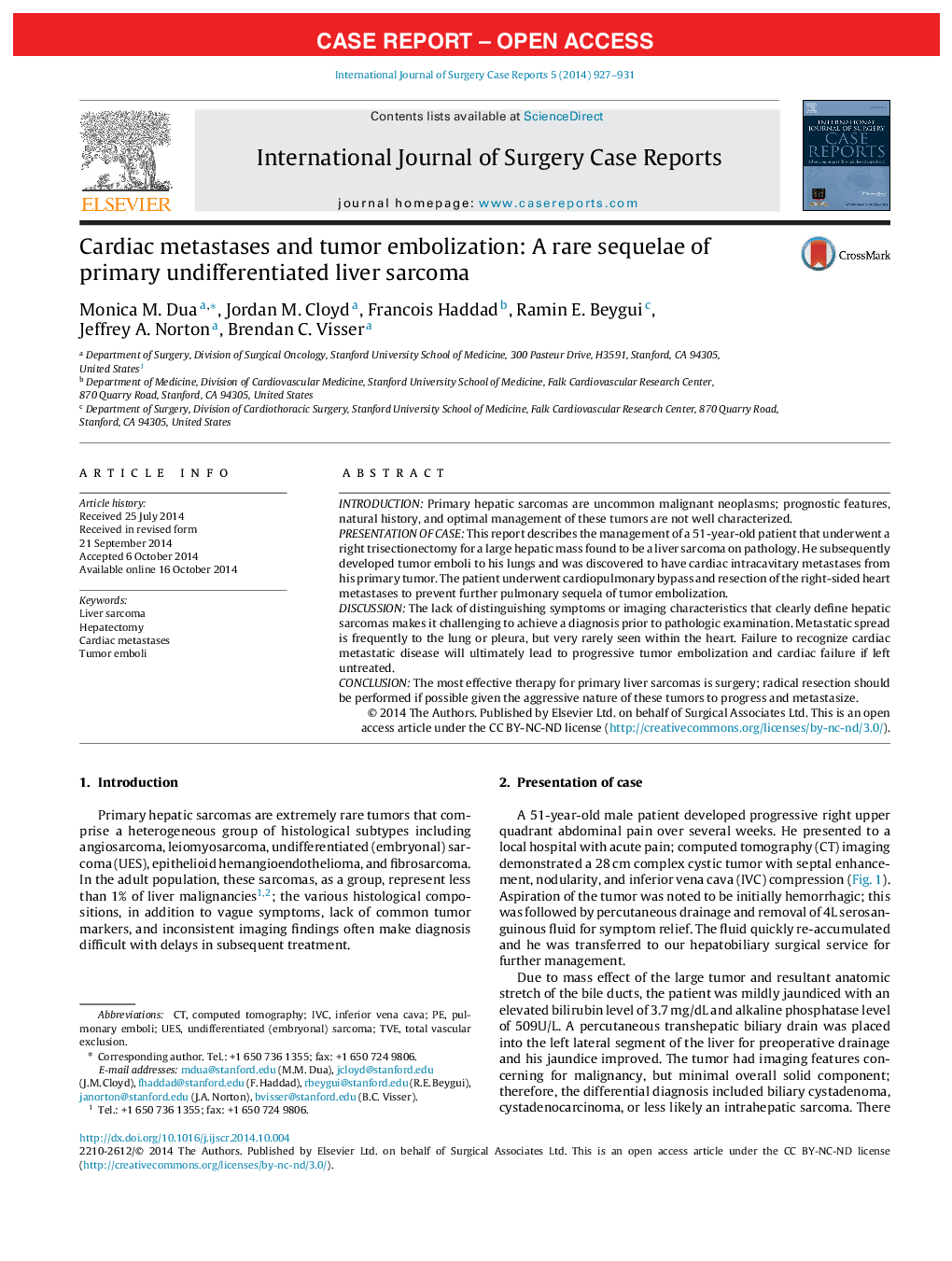| Article ID | Journal | Published Year | Pages | File Type |
|---|---|---|---|---|
| 4289288 | International Journal of Surgery Case Reports | 2014 | 5 Pages |
•Primary liver sarcomas are uncommon tumors with heterogeneous subtypes.•Diagnosis is challenging given vague symptoms and imaging characteristics.•Surgery is the most effective therapy for primary liver sarcoma.•These tumors have an aggressive nature to recur and metastasize.•Rare cardiac metastases can cause fatal tumor embolization if left untreated.
INTRODUCTIONPrimary hepatic sarcomas are uncommon malignant neoplasms; prognostic features, natural history, and optimal management of these tumors are not well characterized.PRESENTATION OF CASEThis report describes the management of a 51-year-old patient that underwent a right trisectionectomy for a large hepatic mass found to be a liver sarcoma on pathology. He subsequently developed tumor emboli to his lungs and was discovered to have cardiac intracavitary metastases from his primary tumor. The patient underwent cardiopulmonary bypass and resection of the right-sided heart metastases to prevent further pulmonary sequela of tumor embolization.DISCUSSIONThe lack of distinguishing symptoms or imaging characteristics that clearly define hepatic sarcomas makes it challenging to achieve a diagnosis prior to pathologic examination. Metastatic spread is frequently to the lung or pleura, but very rarely seen within the heart. Failure to recognize cardiac metastatic disease will ultimately lead to progressive tumor embolization and cardiac failure if left untreated.CONCLUSIONThe most effective therapy for primary liver sarcomas is surgery; radical resection should be performed if possible given the aggressive nature of these tumors to progress and metastasize.
Graphical abstractFigure optionsDownload full-size imageDownload high-quality image (111 K)Download as PowerPoint slide
